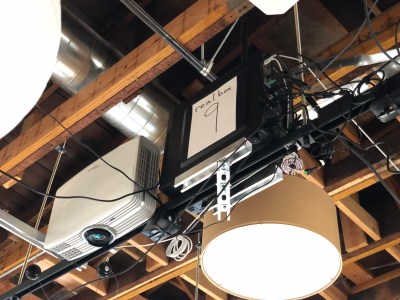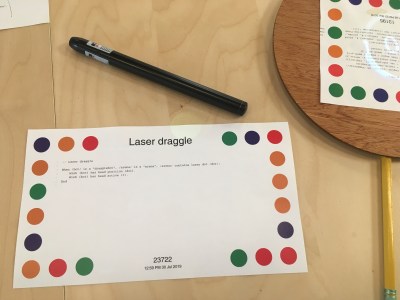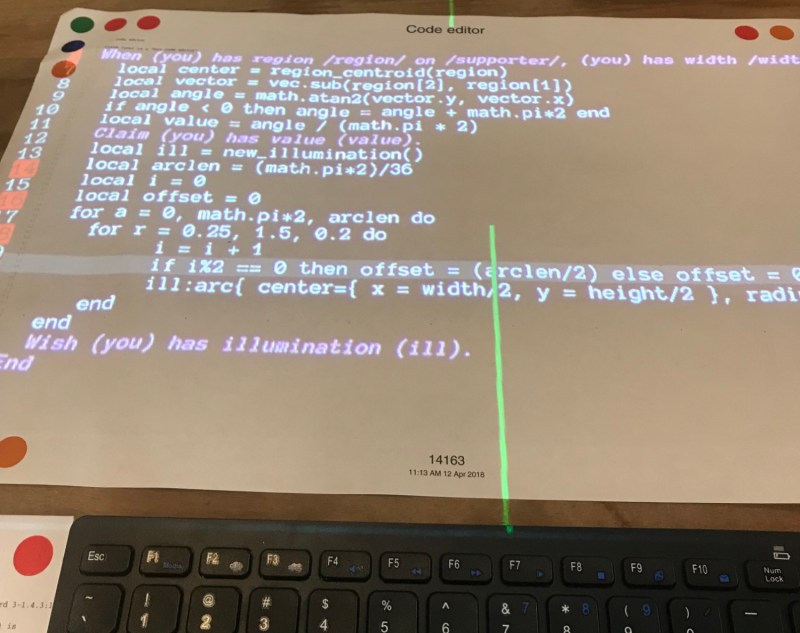Every once is a while a research project comes along that has the potential to totally shake up computing and what it even means to interact with a system. The project Dynamicland.org, is a result of [Bret Victor]’s research journey over the years, looking into various aspects of human computer interaction and what it even means to think like a human.


Dynamicland is an instantiation of a Realtalk ecosystem, deployed into a whole building. Tables are used as computing surfaces, with physical objects such as pieces of paper, notebooks, anything which can be read by one of the overhead cameras, becoming the program listing, as well as the user interface. The camera is associated with a projector, with the actual hardware hooked into so-called ‘Realboxes’ which are Linux machines running the Realtalk software. Separate Realboxes (and other hardware such as a Raspberry Pi, running Realtalk) are all federated together using the Realtalk protocol, which allows communication from hardware in the ceiling, to any on the desk, and also to other desks and computing surfaces.
Realtalk itself is described as an environment for authoring and using computation media. The Realtalk system provides a language extension to Lua. Together these form a domain-specific language. Realtalk is also a kind of reactive database, which means that the emphasis is on the flow of data and connections between data producing things, and data consuming things. For a bit more explanation of how reactive programming can be used with modern relational databases, check out this article on the subject.
For a good overview of how this works in practice, from a programming perspective, checkout [Omar Rizwan]’s article about his ‘Geokit’ project. Another interesting read is the work by [Andrés Cuervo.]
Dynamicland is an active research project, that was impacted by Covid. Obviously, the whole thing is about human-to-human interfacing, learning and cooperation, using the building to implement the computing flows. Covid closed the physical building, which is why the twitter account looks a bit dead. We made contact with [Bret] regarding the project status and he replied very quickly, that the team have been active during the shutdown implementing the next revision of Dynamicland, and the newest version is now being used by the community. He pointed us at the project 501(c)(3) narrative which describes the ethos behind the project. Finally, the project twitter is the go-to place to see what’s going on, so would be worth a check-in. We shall leave it to [Bret] to have the final word:
this is what’s impossible to convey about @dynamicland1
— what look like “demos” or “projects” in these tweets are actually just the leftover scratch paper from conversation, discussion, exploration, playing, joking, riffing in a real place in real time with real people
dialin' & driftin' @dynamicland
(Realtalk on Raspberry Pi by @rsnous)
(turn on sound) pic.twitter.com/wbVyvakzHM— Bret Victor (@worrydream) June 7, 2018
Thanks [Jay] for the tip!
















Wonder if inspired by Donald A. Norman’s book The Invisible Computer: Why Good Products Can Fail, the Personal Computer Is So Complex, and Information Appliances Are the Solution. The idea of embedded computing in buildings among other things.
Good tip on the book, never heard of it before so will have to give it a read.
But on the idea of usefulness, this would be great in the shop. Auto schematics, overlays, the works.
What Dynamicland is doing is hard to understand. I found the last of these links most helpful.
https://tashian.com/articles/dynamicland/
https://dynamicland.org/2017/Zine/
https://dynamicland.org/2024/Why_not_head-mounted_displays.pdf